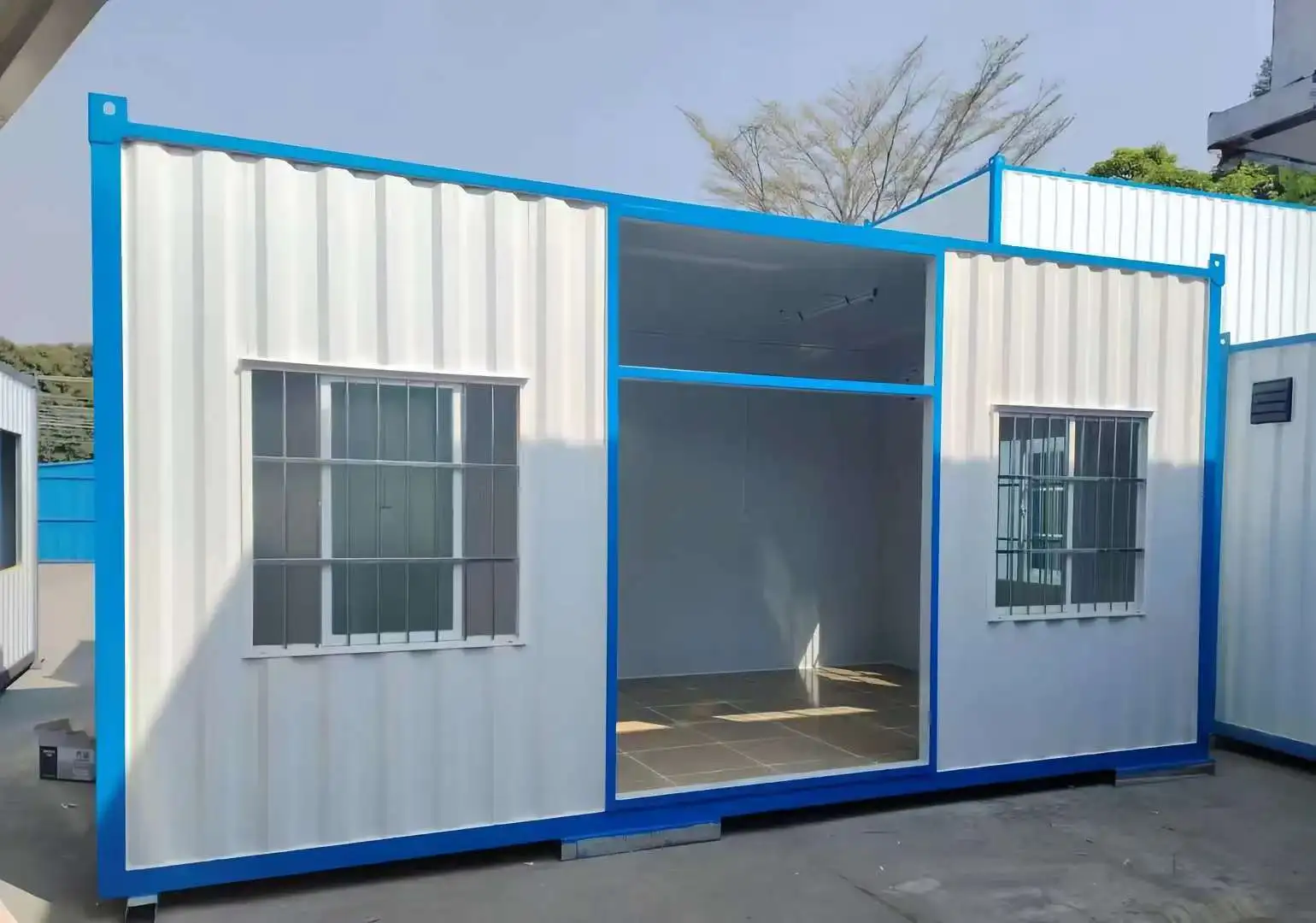The Structural Integrity of Foldable Container Houses
Materials and Construction
Foldable container houses are constructed using high-quality, industrial-grade materials to ensure exceptional durability and long-term use. The main structural component is steel, chosen for its outstanding strength, weather resistance, and load-bearing capacity.These homes are finagled to endure severe environmental conditions similar as strong winds, heavy downfall, extreme temperatures, and seismic exertion, making them suitable for both endless and temporary installations across different climates and terrains.
To ensure safety and durability, foldable container house manufacturers like Shandong Building Materials comply with rigorous international standards. Certifications such as ISO, CE, AS, US, and CA validate that these structures meet global benchmarks for quality, performance, and environmental responsibility. Adhering to these standards reassures buyers that the container homes are structurally sound, safe for occupancy, and built to withstand real-world demands across multiple regions and industries.
Standards and Certifications
Foldable container houses benefit from extensive customization options that contribute to their durability. Tailored design solutions, including various roof types and cladding materials, allow adaptation to specific environmental conditions like snow load or solar exposure. Using advanced 3D modeling and structural analysis, manufacturers can optimize every component for maximum strength and resilience, resulting in a final product that is both robust and tailored to the client’s functional and aesthetic needs.
Customization and Design
Energy efficiency is a standout benefit of foldable container houses. The integrated insulation in walls and roofs reduces heat loss during winter and limits heat gain in summer, maintaining stable indoor temperatures year-round.This significantly cuts down on heating and cooling energy demands, which not only reduces operating costs but also minimizes wear and tear on HVAC systems, extending their lifespan and contributing to the overall durability of the building.
Advantages of Foldable Container Houses
Energy Efficiency
One of the key features of foldable container houses is their exceptional energy efficiency, which makes them a smart and sustainable choice for modern living. The insulated walls and roofs are designed to minimize thermal transfer, helping to maintain a stable and comfortable indoor temperature throughout the year. This significantly reduces the need for energy-intensive heating or cooling systems, cutting down on utility bills. Additionally, improved energy performance reduces wear on HVAC systems, enhancing the overall durability and environmental friendliness of the structure.
Fast Assembly and Flexibility
The ability to quickly assemble and disassemble foldable container houses is a significant advantage that sets them apart from traditional structures. These houses are designed with efficiency in mind, allowing for rapid setup on-site without the need for heavy construction equipment. This ease of assembly not only reduces labor costs but also shortens construction timelines, making them an excellent option for emergency response, temporary housing, or mobile workspaces. Furthermore, their modular design facilitates straightforward repairs or replacements, as damaged sections can be easily swapped out without dismantling the entire unit. This flexibility enhances the overall usability and extends the functional lifespan of the structure.
Versatile Applications
Foldable container houses have a wide range of applications, from camps and dormitories to schools and mining accommodations. This versatility demonstrates their ability to adapt to various environments and uses, further showcasing their durability. The robust construction allows these structures to withstand the demands of different settings, whether it's the harsh conditions of a mining site or the daily wear and tear of a school environment.
Maintenance and Longevity
Routine Maintenance
Like any building, foldable container houses require regular maintenance to ensure their longevity. This includes periodic inspections of the structural components, checking for any signs of wear or damage, and addressing issues promptly. The modular nature of these houses makes maintenance tasks more manageable, as individual components can often be replaced without affecting the entire structure.
Corrosion Protection
One of the primary concerns with steel structures is corrosion. However, modern foldable container houses are designed with this in mind. The steel components are typically treated with anti-corrosion coatings, and the exterior panels are often made from corrosion-resistant materials. This protection significantly extends the lifespan of the structure, especially in coastal or humid environments.
Long-Term Performance
When properly maintained, foldable container houses can have a remarkable lifespan. Many manufacturers, including Shandong Building Materials, estimate a potential using life of up to 70 years for their structures. This long-term performance is a testament to the durability and quality of these innovative housing solutions.
Conclusion
Foldable container houses have proven to be not only practical and versatile but also highly durable. Their robust construction, adherence to international standards, and energy-efficient design contribute to their longevity and reliability. Whether used for temporary accommodations or long-term housing solutions, these structures offer a sustainable and resilient option for various applications.
As the demand for flexible and durable housing solutions continues to grow, foldable container houses are likely to play an increasingly important role in addressing housing needs worldwide. Their combination of strength, efficiency, and adaptability makes them a compelling choice for a wide range of users, from individuals seeking affordable housing to organizations requiring reliable structures in challenging environments.
For more information about foldable container houses and other exterior cladding and facade solutions, please contact Weifang Sandong Building Materials Co., Ltd. at info@sdqsc.com. Our team of experts is ready to assist you in finding the perfect solution for your building needs.